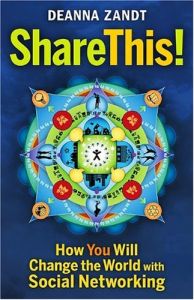Join getAbstract to access the summary!

Join getAbstract to access the summary!
Deanna Zandt
Share This!
How You Will Change the World with Social Networking
Berrett-Koehler, 2010
What's inside?
Activism has a new home in social media. Don’t be afraid to move in.
Recommendation
Social activist and media guru Deanna Zandt proclaims, “Don’t let your fear of social networks keep you from joining in the conversation.” She explains that the new ecosystem developing online needs everyone’s voice to be healthy. A diverse group, she believes, must engage online, sharing their stories, experiences and opinions. Zandt’s easy-to-understand, conversational style helps dispel some of the fear surrounding new technologies, as do the resources, tips and tactics she includes in the closing chapters. Zandt makes a good case for joining in, but leaves the details about how activists should use social media to others. getAbstract recommends this book to anyone looking to understand the online fray as well as to those interested in social change.
Summary
About the Author
Deanna Zandt hosts “TechGrrl Tips” on GRITtv and specializes in issues involving women and technology issues.


















Comment on this summary